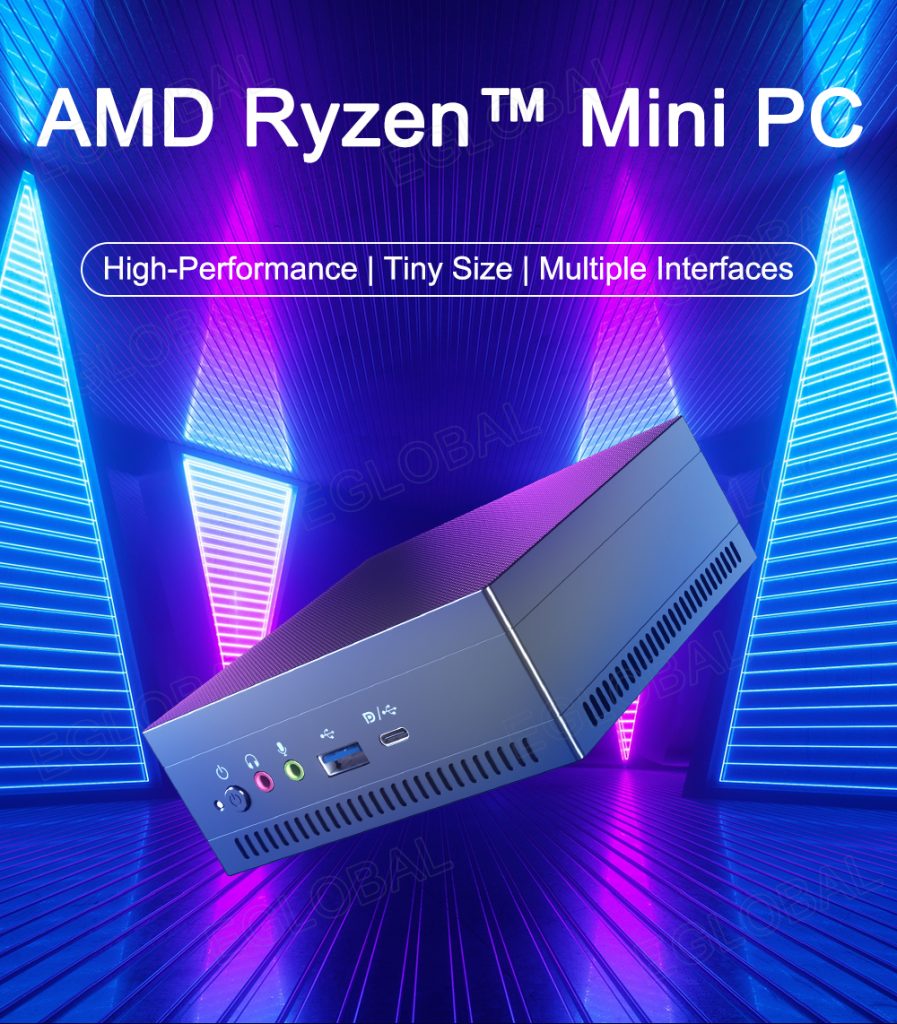A small model is a high-performance 64-bit computer with a thin instruction set processor that has performance and price between a PC server and a mainframe. mini computer refers to a high-performance computer that operates similarly to PCs (personal computers) and servers, but has completely different performance and uses from them, and it is a high-performance computing product first developed by DCE (Digital Equipment Corporation) in the 1970s.
The Corresponding English names of foreign mini computers are mini computer and midrange computer. Midrange computer is relative to mainframe and microcomputer, the term has been mistranslated by some domestic textbooks as medium-sized machine, the term mini computer was created by DEC in 1965. In China, mini computers are customarily used to refer to UNIX servers. In 1971, Bell Labs released unix, a multitasking, multi-user operating system, which was subsequently adopted by some commercial companies and became the mainstream operating system for servers. This server type is mainly used for industry applications with high reliability for single point operation of business such as financial securities and transportation.
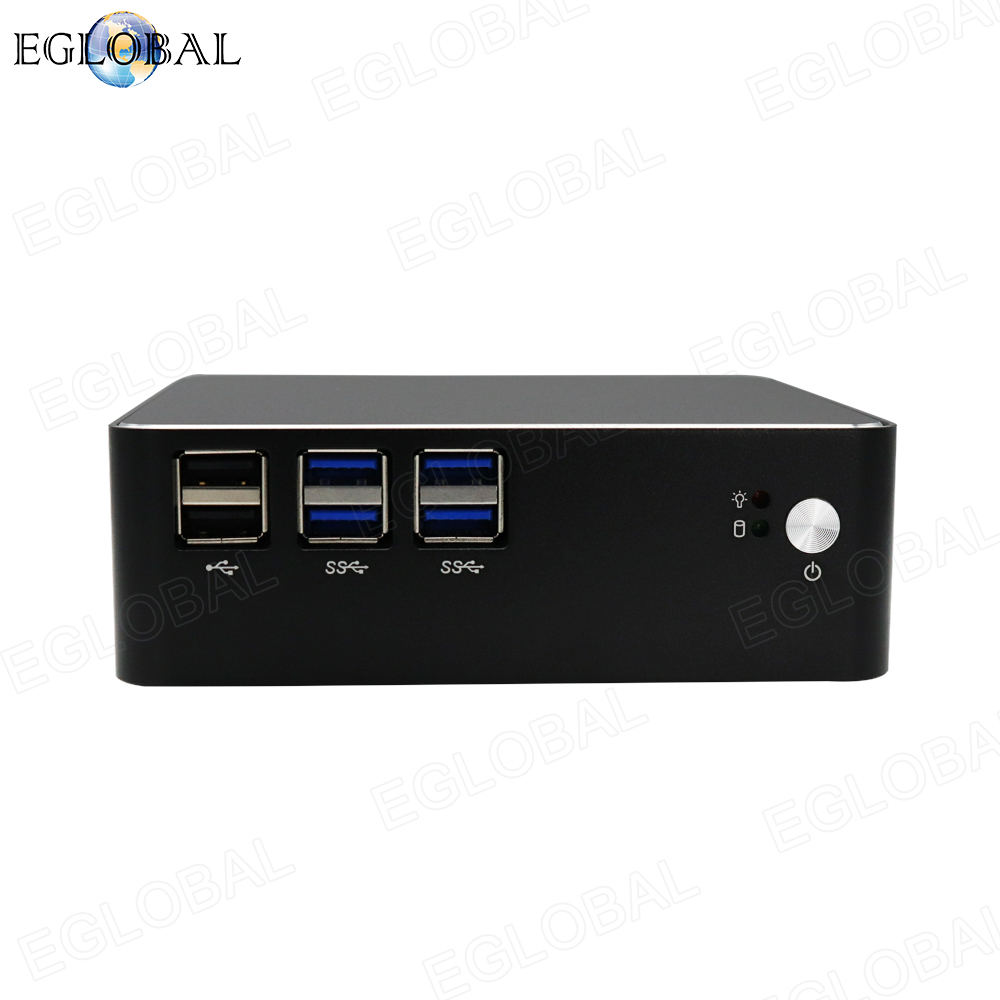
Foreign origins
In 1965, John Glenn, the head of overseas sales at DEC, shipped the PDP-8 to the United Kingdom and found that the streets of London were popular “Mini”, and girls rushed to wear skirts shorter than the knees, lively and light, looking so feminine. He suddenly discovered the connection between the PDP and the miniskirt, and the news media immediately accepted the idea, jokingly calling the PDP-8 a “mini machine”. “Mini” (Mini) means “small”, this kind of machine, small and exquisite, 61 cm long, 48 cm wide, 26 cm high, put it on a slightly larger table, how to look like a “mini skirt” of the “lady”. Priced at just $18,500, it was lower than any company’s computer product at the time, and soon became the dominant DEC profitable product and sparked a miniaturization revolution in the computer market at the time. Unlike later servers, mini computers use a host/dumb terminal model, and each vendor has its own architecture and is not compatible with each other.
Domestic development
The UNIX server, which is the small machine used to be said in the Chinese industry, is in a mid-to-high-end position in the server market. UNIX servers have a unique architecture that distinguishes X86 servers from mainframes, and basically, UNIX servers from each manufacturer use their own UNIX versions of the operating system and proprietary processors. For example, IBM uses Power processors and AIX operating systems, Sun and Fujitsu (Fujitsu) use SPARC processor architecture and Solaris operating systems, and HP uses Itanium processors and HP-UX operating system, Inspur adopts EPIC processor architecture and K-UX operating system; In the past, Compaq (which has been incorporated into HP) adopted Alpha’s processor architecture. Users of mini computers generally value the security, reliability, scalability, and excellent processing power of the Unix operating system and dedicated servers with high concurrent access.
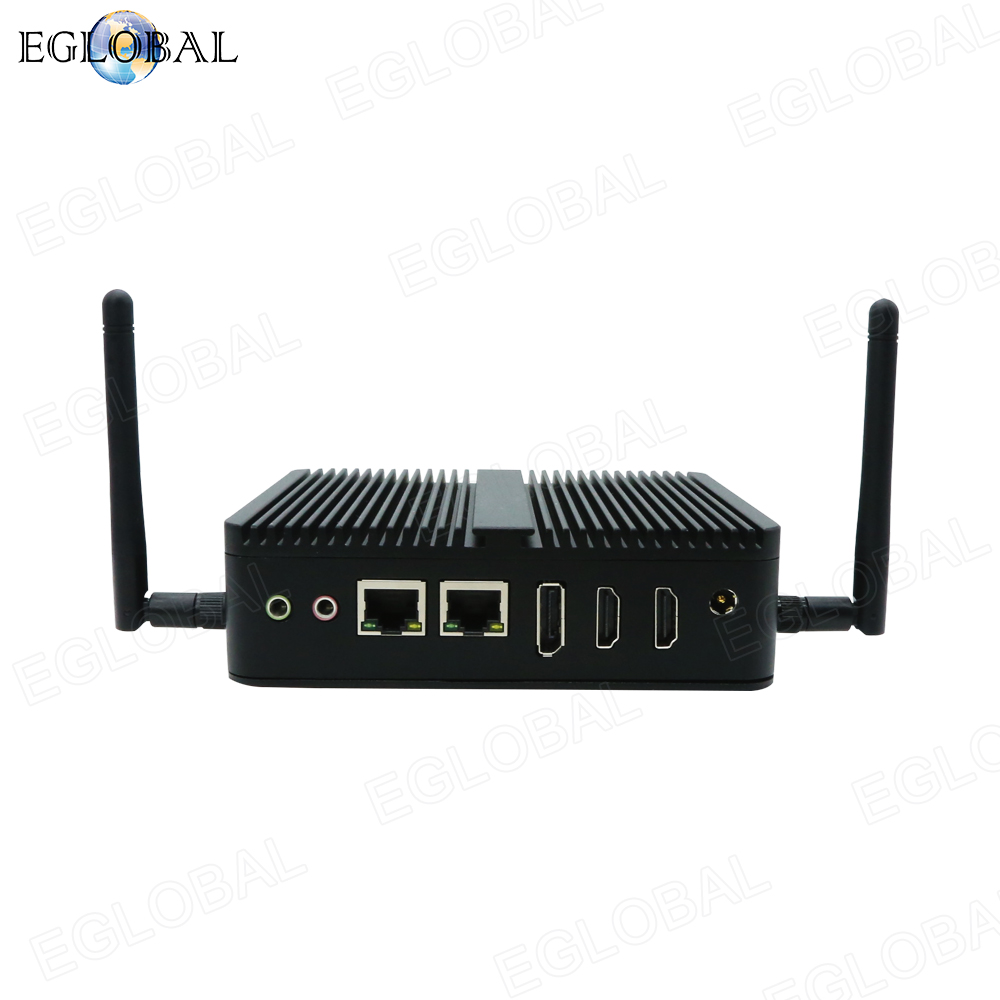
Manufacturer
At present, the manufacturers of UNIX servers are mainly IBM, HP, Oracle (acquisition of SUN), Inspur, and Fujitsu. Typical machines such as IBM’s RS/6000, Power8, Power9, HP’s SuperDome, RX9800, RX9900, Inspur’s Tissot K1950, etc. SUN and HP have some high-end mini computers such as HP’s SuperDome2 as products that compete with mainframes, but they compete with mainframes such as the IBM Z series Unisys ClearPath, from the perspective of system architecture and processing logic, belongs to a completely different technical sequence, h still belongs to the category of mini computers.
peculiarity
The technologies commonly used in high-end IBM mini computers are: RISC-based multiprocessor architecture, megabytes of byte cache, several gigabytes of RAM, hundreds of gigabytes of disk storage on dedicated I/O channels using I/O processors, and purpose-built management processors. They are small and air-cooled, so there are no special cooling duct requirements on the customer site.
characteristic
Mini computers are very different from ordinary servers (also known as PC-SERVER), and the most important point is the high RAS (Reliability, Availability, Serviceability) characteristics of mini computers.
RAS is the abbreviation of the three English words of Reliability, Availability, Serviceability, which reflect the three famous characteristics of high reliability, high availability and high service of computers, and their specific meanings are as follows:
High reliability: The computer runs continuously and never stops.
High availability: important resources are backed up; Ability to detect potentially impending problems and be able to transfer running tasks on them to other resources to reduce downtime and keep production running; Features real-time online maintenance and deferred maintenance.
High serviceability: real-time online diagnosis, accurate location of the fundamental problem, to achieve accurate and rapid repair.
Mini computers have unique architectures that distinguish PCs and their servers, as well as the patented technology of each manufacturer, and some also use mini computer-specific processors, such as sun in the United States, Fujitsu (Fujitsu) and other companies based on SPARC processor architecture, while the American HP company is based on PA-RISC architecture; Compaq is an Alpha structure. In addition, the I/O bus is not the same, Fujitsu is PCI, Sun is SBUS, and so on. This means that the cards on the company’s mini computer machines, such as network cards, graphics cards, SCSI cards, etc., may also be dedicated. In addition, the operating system used by mini computers is generally based on Unix, such as Sun, Fujitsu is sun solaris, HP is hp-Unix, and IBM is AIX. Therefore, mini computers are closed and dedicated computer systems. Users who use mini computers generally value the security, reliability of the Unix operating system and the high-speed computing power of dedicated servers. At present, the manufacturers of mini computers mainly include HP, IBM, SUN, Inspur, Dawn and so on. Their main feature is that the annual downtime is only a few hours, so they are collectively called z series (zero zero). AS/400 is mainly used in banking and manufacturing, as well as for Domino, the main technology is TIMI (technical independent machine interface), single-level storage, with TIMI technology can be hardware and software independent of each other. RS/6000 is common and is used in scientific computing and transaction processing.
Classify
According to the traditional classification of computers, the personal computers we use belong to “microcomputers”, referred to as “microcomputers”, and then there are small computers, medium-sized computers, mainframes, giant computers, supercomputers and so on. Except for the personal computer “microcomputer”, other classified machines are not personally playable. Analogy: The microcomputer → can be placed in a large iron box on the desktop, and the mini computer → a small refrigerator.
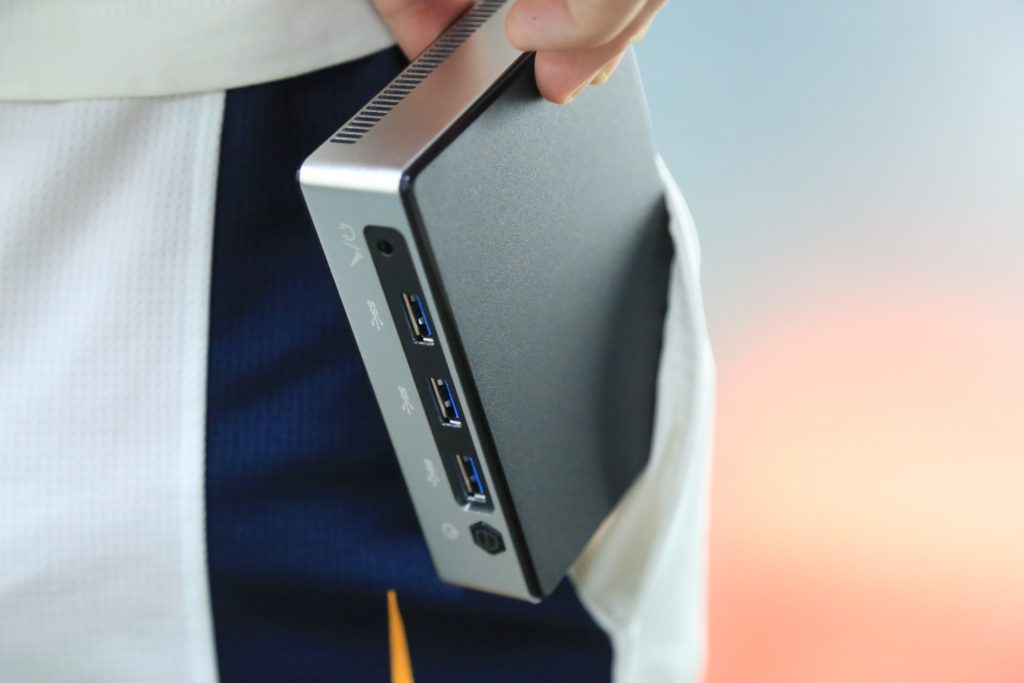
The history of mini computers
The computer, or computer, was perhaps one of the greatest inventions of mankind in the 20th century. Today a middle-class urban home may have a dozen computing devices in various forms – desktops, laptops, HTPCs, tablets, smartphones, e-books, set-top boxes/TV sticks/smart TVs, game consoles, smart watches/bracelets, and more. We use them to find information, read, listen to music, watch videos, play games, deal with personal affairs, work, shop. We can’t imagine a world without them.
However, when computers were first invented, they were far from the same. The first computer, ENIAC, sold for more than 10,000 times more than a smartphone today, 40 million times in size, 400,000 times in power and 120,000 times in weight, but only one-in-2,000 times the computing power of the latter. More importantly, the early computer functions were very limited, really only able to “calculate”, and it was very difficult to operate, only supporting machine languages, and the users were basically highly educated personnel with professional training. The engineers who developed ENIAC probably never imagined that today’s “computers” could be carried in their pockets or even on their wrists, and most of the time they were spent for leisure and entertainment. The history of computer development in the past 70 years is actually the history of continuous miniaturization and continuous closeness to life. The beginning of this history should start from the mini computer.
The early computers of the 1940s and 1950s were large because of the use of electron tubes. It often requires an entire room to store, and the price is more expensive, such as ENIAC costing as much as $487,000 ($6 million today), while the United Kingdom’s Manchester Mark I (the first von Neumann machine) cost £100,000 ($5 million today), and operation and maintenance cost a lot. Even the first mass-produced computer, UNIVAC, was available for $159,000 ($1.41 million today), which only large scientific institutions and universities could possess.
The UNIVAC I, which was launched in 1951 and covers an area of only one-third of ENIAC, and a total of 46 units were manufactured, starting at $159,000 and later rising to $1.25-1.5 million. It was also the first general-purpose computer capable of handling both numerical calculations and word processing, programmed in assembly language, using an electric typewriter, tape, and oscilloscope as input and output devices, capable of performing 1905 operations per second, and storing 12,000 bits of data (i.e., 12,000 binary characters). The opportunity for computer miniaturization began with the use of transistors. In 1955, the first computer, the TX-0, which used all transistors, was developed by the Lincoln Laboratories at MIT. In 1960, DEC, founded by former lincoln laboratory employees, improved the design of the TX-0 and introduced the PDP-1, which later developed into one of the most famous mini computer series in history, and DEC later became the most famous manufacturer of mini computers. Spacewar!, the first video game in history to be widely copied (in that era, was manually fed into the computers they worked on), was also developed on the PDP-1, introduced in 1962, and later with the success of the mini computer market, thousands of machines ran the game, and was one of the most popular video games throughout the 70s. I personally played a replica of this game at the Computer History Museum in Silicon Valley, where two people each controlled a spaceship to fire missiles against each other, which was actually quite fun more than 50 years ago. PDP-1 also appeared on one of the earliest word processing software, Expensive Typewriter.
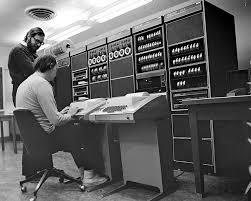
There are many other software also running on the PDP-1 such as the oscilloscope as a display device of the mini computer, in the same period in addition to the MIT Lincoln Laboratories of this school of products, there are CDC (Control Dta) company launched miniaturized computers – CDC160 above these machines are still relatively large, the price is still relatively expensive, not considered to be a real mini computer. The first true mini computer is generally considered to be the LINC (Laboratory INstrument Computer), also introduced by DEC. Compared to the PDP-1, the computer can already fit in a desk-sized space, and the price has dropped from $120,000 to more than $40,000 ($320,000 today), but the first commercially successful mini computer was the DEC PDP-8 introduced in 1965. The mini computer sold for as little as $18,500 ($140,000 today) and was smaller than previous computers. Its CPU frequency is about 800kHZ (PDP-8 does not have a fixed clock frequency).
In 1966, DEC introduced the PDP-8S, which sold for only $10,000, and later the PDP-8E, which was even smaller and priced as low as $8,000, which was also the era of great changes in computer storage devices. Early PDP-8 used punched paper tape as a storage device, the front panel as a display device, and in the middle period, punched cards and tapes were used, but in the later stages, floppy disks and hard disks were used as storage devices, and the display terminal was used as the output device PDP-8. Early PDP-8 programmers stored code written in PAL-8 (assembly language), FOCAL (interpreted language), or Fortran (imperative language) on such paper tape.
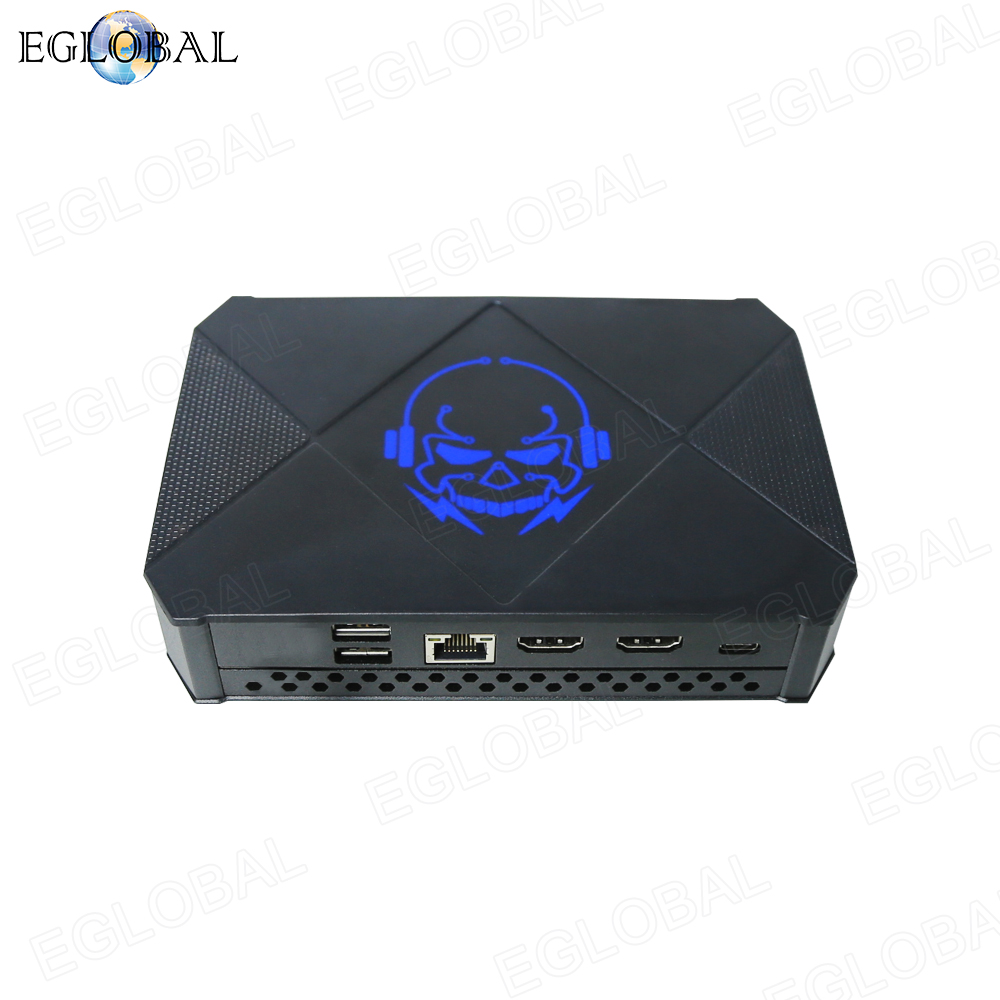
Later PDP-8 display terminals, at this time PDP-8 also supported high-level languages like BASIC, programming became much easier. The floppy drive used by the PDP-8 has achieved unprecedented commercial success due to its low price and perfect hardware and software functions. More than 50,000 units were sold for this model alone, and if you count the various improved PDP-8s, the total sales volume is as high as 300,000 units. Also starting with PDP-8, computers were no longer just used by professionals in large institutions, but began to enter ordinary offices in Western developed countries. In order to facilitate people’s use, PDP-8 has also emerged a lot of software, such as os/8 operating system, which allows users to operate the computer in the form of command line on the display terminal. Later, there was RTS-8, a real-time operating system that supports preemptive multitasking, COS300, a preemptive multitasking operating system that supports multiple users, and TSS-8, a time-sharing multitasking operating system that supports multiple users. The PDP-8 also offers word processing programs like WPS8, which developed in the 1980s into DEC’s All-in-1 office suite, providing a full suite of office functions, similar to the later MS Office. The success of the PDP-8 certainly attracted many competitors. Hp also introduced its first mini computer, the HP2116A, in 1967, which later became the HP2100 (later renamed hp1000) series. Unlike the PDP-8, the HP2100 uses a 16-bit processor with more processing power than the PDP-8, and is priced at $22,000. In 1969, another company, Data General, introduced the mini computer Nova, also with a 16-bit processor, but at a much lower price, at $3,995 ($26,000 today) and $7,995 even with RAM extensions (which were almost a must for Nova). Nova was a huge success, selling more than 50,000 units in total. Despite facing many competitors, DEC is still the undisputed king of the mini computer market.
In 1970, while continuing to sell and update the PDP-8 product line, the more powerful PDP-11 with 16-bit processors was introduced, using 16-bit processors. Still priced at $18,000, it was much more expensive than the Nova, but it still sold 600,000 units, making it the most successful mini computer at the time.
In 1977, DEC introduced the first 32-bit mini computer, and the VAX series was still exerting its residual heat at the same time, while the lower-cost PDP-8 series was still exerting its residual heat. Beginning in 1977, DEC introduced a range of PDP-8 compatible machines under the name DECmate. The figure below shows the first product in the series, the VT78, which uses an Intersil 6100 CPU with a clock frequency of 2.2MHZ to encapsulate the computing power of the PDP-8 into the VT-52 display terminal. The computer is compact, but still expensive at $7,995 and is mostly institutional users. What really brought computers into the mass era was the earliest microcomputer that appeared in the same period.that is, the home computer.
Judging from the history of miniatures above, miniatures are complex in structure and require more investment in production, so they are also very expensive. However, this situation has long changed.
In the early days, science and technology was not developed, people’s understanding of computers was not high, so the price of making a minicomputer was very expensive at the time, but now it is different, with the advancement of science and technology, people’s understanding of computers is getting deeper and deeper, and the skills of making computers are becoming more and more skilled, so in the current era, buying a computer is not expensive. On a company independent website, you can buy a variety of minicomputers at different price points, and the price generally fluctuates between a few hundred dollars.
For example:Eglobal Hot Sell Minipc Desktop Office Minipc Intel Celeron M3-J4125 With Dual Com Ports and Dual RJ45 Gian Lan Ports.
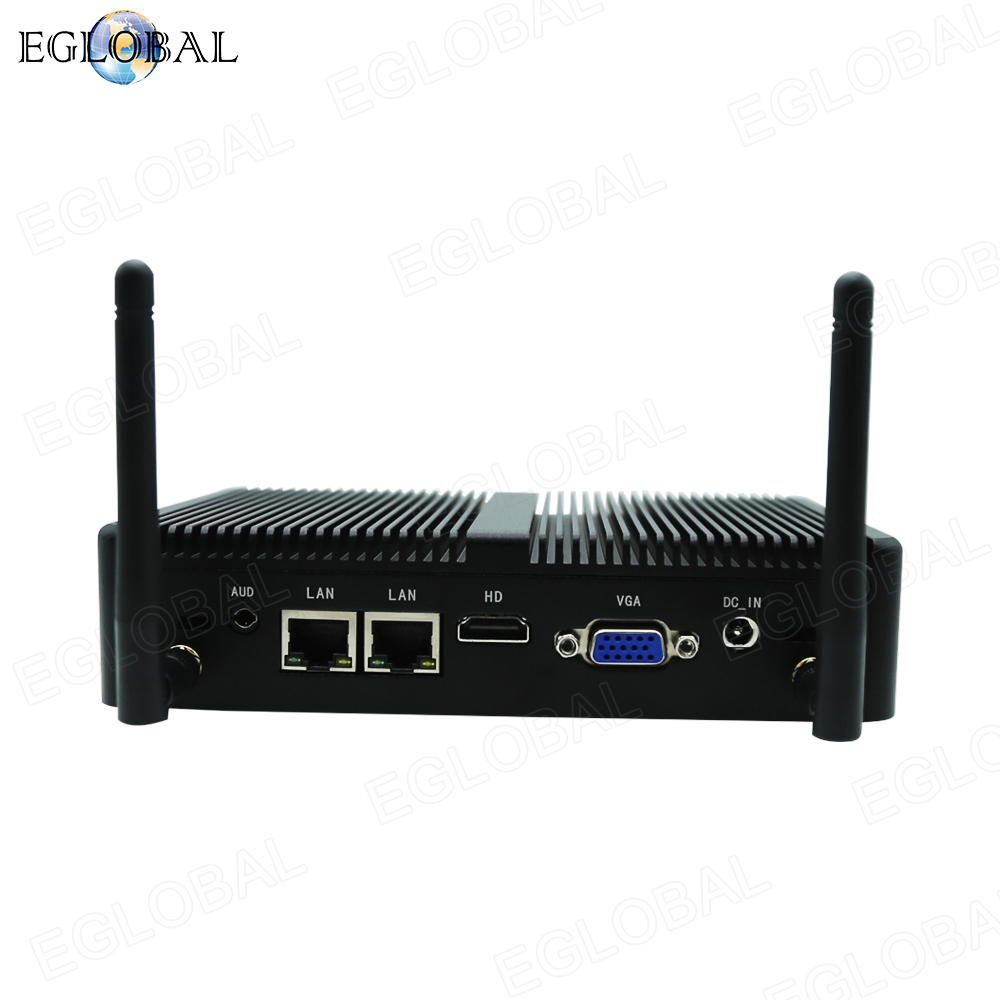
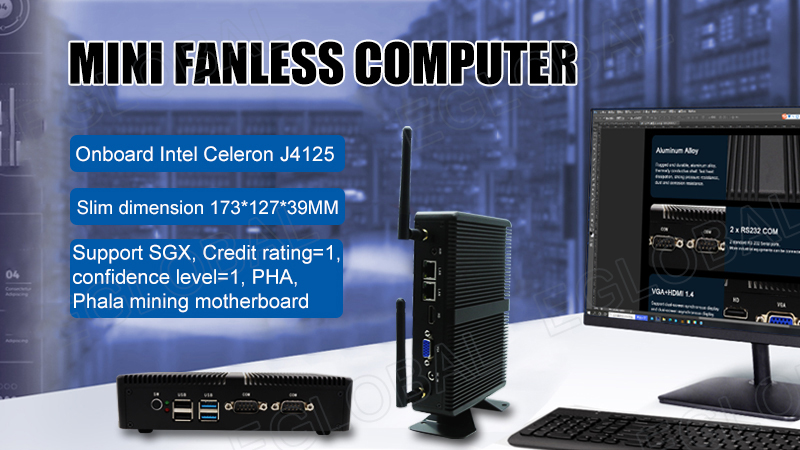
This new mini computer is priced at $147 on the EGLOBAL independent website, and most families can afford it.
About this item:
[Processor & Pre-installed OS]
EGLOBAL Fanless Mini Computer M3-J4125 equips with 9th Gen. Celeron J4125 processor, 4 core 4 thread, Max frequency 2.7GHz. This PC is very fast when loading apps and opening files. It’s pre-installed with Windows 10 Pro (NO Windows license, Just for test) and also supports windows 8, Linux Ubuntu and more open-source systems, etc.
[Expandable RAM & Storage Capacity]
EGLOBAL Fanless Mini Computer M3-J4125 comes with DDR4 RAM and mSATA 3.0 SSD/HDD. The memory is 1x SODIMM slot, the PC supports Max 8GB DDR4 memory. The storage can be upgraded to either 1TB mSATA/ NVME SSD or 1TB SATA HDD. Large storage will meet the hardware requirements of different software and others applications.
[Triple Display and Multiple Interface]
EGLOBAL Fanless Mini Computer M3-J4125 supports 4K Ultra HD content, Max resolution is 4096×2160@30Hz if connecting the monitor by HDMI. This PC has HDMI, VGA and COM, 3 different Video output ports, you may connect the PC to 3 displays. M3-J4125 has more I/O Interface to meet your extra needs: 2 Gigabit LAN, 2 USB2.0, 2 USB3.0 etc.
[Portable & Silent]
EGLOBAL Fanless Mini Computer M3-J4125 is built for personal use, its size is only 17.3cm x12.7cm x 3.9cm to save desktop space. In addition, M3-J4125 is fanless design, it does not have fan noise when running, and it only has a 10W TDP to maintain low power consumption to save energy and 7×24 hours quiet running.
[3 Years WTY]
Customers get 3 years free repair, we also provide DropShipping service and OEM /ODM customized service all over the world. We offer good quality computers and we are always here for help if customs need.
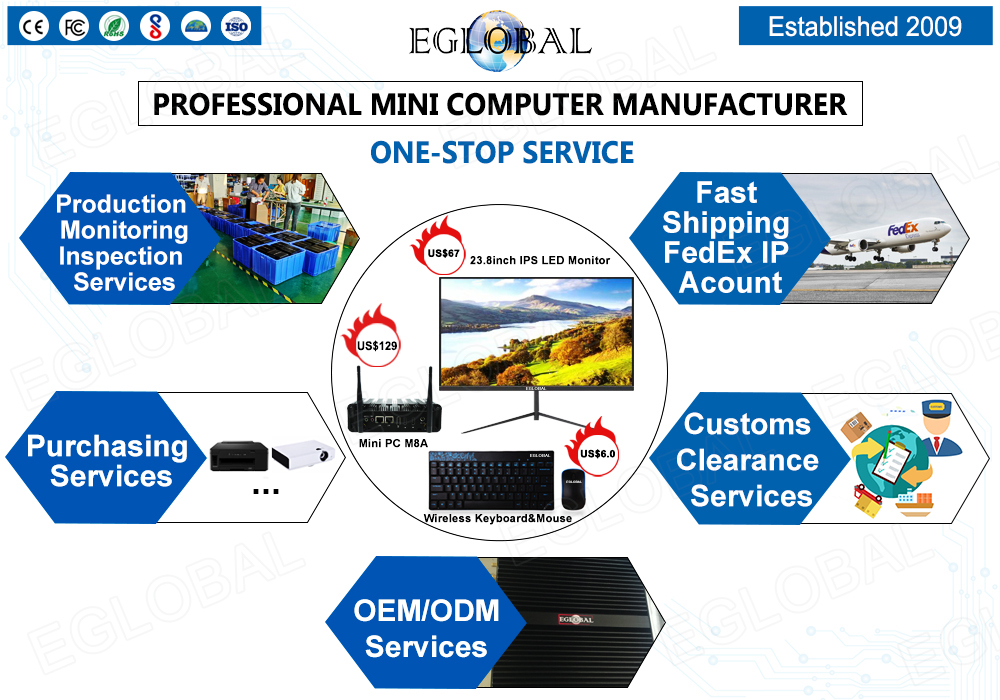
The difference between a mini computer and a microcomputer
Microcomputer is divided into workstations and personal computers, workstations are relatively high-end personal computers, with faster microprocessors, larger memory, larger screens, powerful functions, strong computing power and image processing capabilities, can complete complex tasks, such as computer-aided design CAD and computer-aided manufacturing CAM and other work, each other can be easily connected into a network. Personal computers are generally X86 architecture, that is, the use of Intel chips and Linux operating system, open source, high degree of standardization.
Mini computer: Using risc chips and Unix operating systems, the system is closed and the degree of standardization is low, but the degree of RAS is high. Mainly used in the core systems of key industries such as finance, government, telecommunications, and energy, it cannot be rested throughout the year, so the requirements for stability and scalability are much higher than those of personal computers.
The difference is in reliability, scalability and virtualization capabilities, as well as in processing speed io speed and storage capacity.
Microcomputer for personal use, encountered hardware and software failures blue screen restart, is a cheap consumer goods, need to form economies of scale effect, the final result is Wintel. mini computers and mainframes are used in 365×24-hour operating environments, and the selection of components is more stringent than that of microcomputers; Key components with fault detection and remote diagnostic systems; The operating system is extremely robust, supports virtualization and partitioning technology, supports the online replacement of CPU, memory, and storage, that is, migrates applications to available resources, suspends hidden resources (CPU memory, hard disk, etc.), uninstalls and plugs in new hardware, and then incorporates new hardware into management and runs tasks; It is also possible to design different resources for different applications; These functions will be gradually simplified and decentralized to microcomputers such as hard disk RAID and S.M.A.R.T., memory ECC, cpu vt-x, multi-burn point $ can be enjoyed in the microcomputer; Microcomputer USB peripherals can be plugged and played, and all parts of the mainframe can be plugged and played. In terms of performance, the processing power and I/O speed of mainframe, medium-sized, mini computer, and microcomputer of the same supplier (such as IBM) are decreasing. Relying on Linux and bsd, using microcomputers to form clusters, it can also process massive data; Amd and Intel also integrate numerous cores on the chip; But mainframe manufacturers have more dollars and can offer bigger, higher products.
